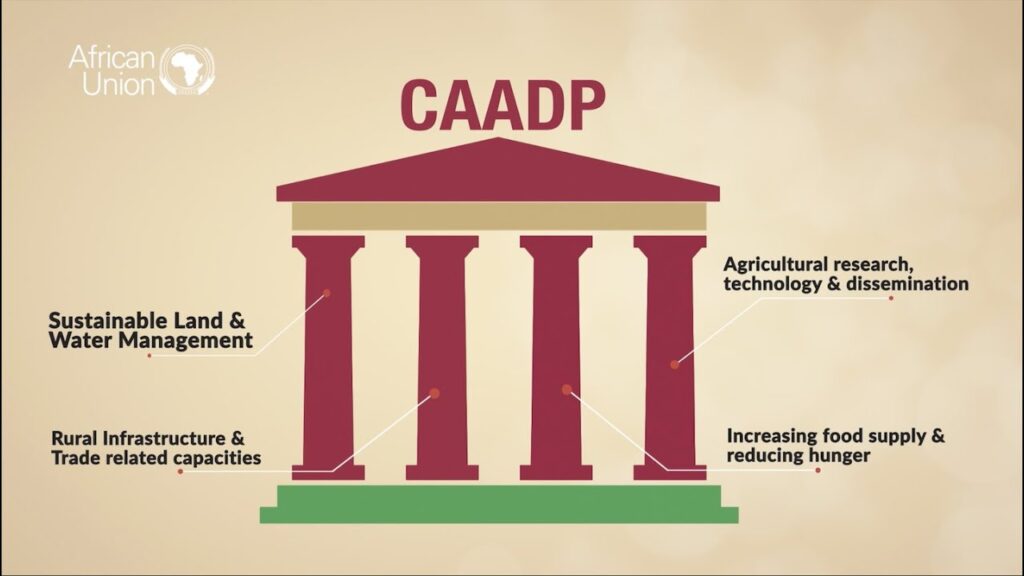Food & Climate
The Kampala Summit concluded today with leaders reiterating their commitment to programmes to combat hunger in Africa, which is nevertheless exacerbated by climate change and the biggest factor being endless conflicts.
The continent’s leaders and officials declared their commitment to implement the Comprehensive Africa Agriculture Development Programme (CAADP), at the emergency summit that ended in Uganda today, Saturday, January 11, 2025.
The Comprehensive Africa Agriculture Development Programme (CAADP) Kampala Summit (January 9–11, 2025), focused on sustainable solutions to the challenge of refugee feeding and the ongoing hunger issues across the continent. The summit addressed these pressing concerns through agricultural transformation strategies outlined in the Kampala Declaration, which builds upon previous declarations—the Maputo Declaration (2003) and the Malabo Declaration (2014)—all of which focus on agricultural transformation to eliminate hunger in Africa, according reports seen by “Food & Climate” platform.
For example, Kenian President William Ruto, who was one of participating leaders, has called on African countries to implement common strategies to build resilient agricultural food systems.
“With the Comprehensive Africa Agriculture Development Programme, the vision of an Africa where no child goes to bed hungry, where every community enjoys access to safe and nutritious food, where agricultural practices safeguard the future of our planet, and where agriculture delivers employment and wealth for millions, is within reach,” he said.
Other leaders who spoke at the summit were Presidents Yoweri Museveni (Uganda), Joào Lourenço (Angola), Évariste Ndayishimiye (Burundi), Hassan Sheikh Mohamud (Somalia), Brahim Ghali (Sahrawi), Taye Atske Selassie (Ethiopia) and African Union Commission Chairperson Moussa Faki Mahamat, among others, according to “Standard Media“.
Hunger in Africa and conflicts
80% of the record 163 million Africans facing acute food insecurity are in conflict-affected countries, including potentially 840,000 people confronting famine in Sudan, South Sudan, and Mali, according to “African center for strategic studies”.
On October, the center new study said: “An estimated 163 million Africans are facing acute food insecurity—sustaining the record numbers of Africans experiencing food crisis. This total is nearly triple the number from 5 years ago, highlighting the rapid escalation in Africa’s food emergency”.
Some 130 million of those facing acute food insecurity are in countries experiencing conflict, many of which have persisted for years and have eroded community and national coping mechanisms.
13 of the 16 African countries with the largest number of people experiencing acute food insecurity are in conflict. This pattern underscores that conflict continues to be the primary driver of acute food insecurity in Africa.
Conflict-affected countries account for 18.6 million (94 percent) of those facing emergency levels (Phase 4), and 840,000 (100 percent) of those facing catastrophic (or Phase 5, famine) levels of food insecurity.

Nigeria, Sudan, and the Democratic Republic of the Congo are the three countries with the greatest number of acutely food insecure people—each with over 20 million individuals facing at least crisis levels of food insecurity. Collectively, these three countries comprise about half of all people on the continent facing acute food insecurity.
Nigeria and Sudan also saw the largest aggregate increases in the number of people acutely food insecure this past year, adding 6.8 million and 5.3 million people, respectively.
Four countries—South Sudan (64%), Sudan (53%), Namibia (48%), and the Central African Republic (44%)—have 40 percent or higher of their populations facing acute hunger.
What is (CAADP)?
The Comprehensive African Agricultural Development Programme (CAADP), is an Agenda 2063 continental initiative that aims helping to eliminate hunger in Africa and reduce poverty by raising economic growth through agriculture-led development, according to “African union”.
Through CAADP, African governments agreed to allocate at least 10% of national budgets to agriculture and rural development, and to achieve agricultural growth rates of at least 6% per annum. Underlying these investment commitments are targets for reducing poverty and malnutrition, increasing productivity and farm incomes, and improving the sustainability of agricultural production and use of natural resources.
CAADP also supports countries to enhance resilience to climate variability through development of disaster preparedness policies and strategies, early warning response systems and social safety nets.

CAADP has 4 priority areas namely:
Extending the area under sustainable land management and reliable water control systems;
Improving rural infrastructure and trade-related capacities for market access;
Increasing food supply, reducing hunger, and improving responses to food emergency crises; and
Improving agriculture research, technology dissemination and adoption.

